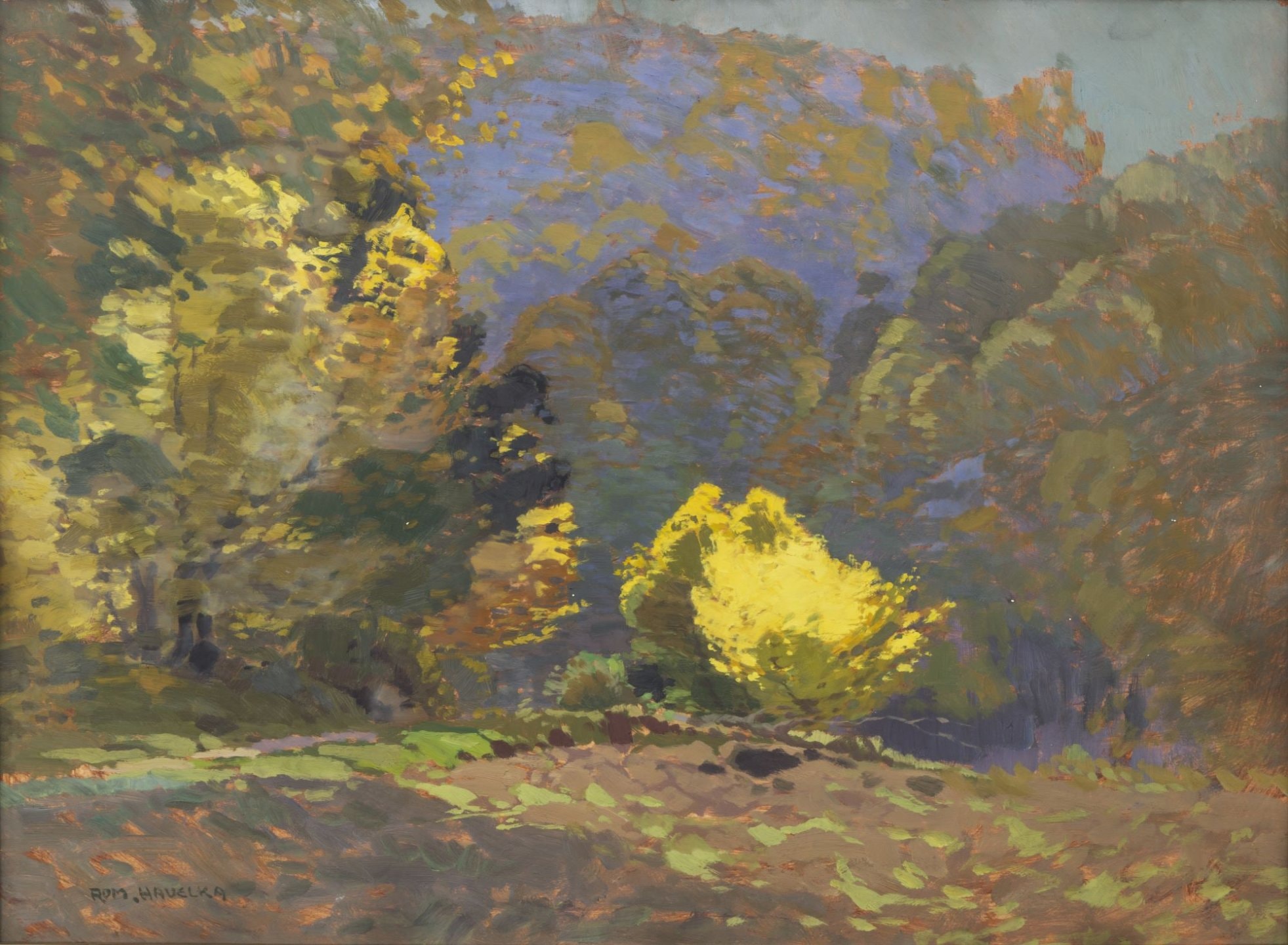Roman Havelka
Roman Havelka
(1877, Jemnice – 1950, Znojmo)
 Roman Havelka byl malíř, jehož tvorba byla silně spjatá s krajinou Podyjí. Studoval na Vysoké škole uměleckoprůmyslové v Praze, později přešel na tamní Akademii výtvarných umění, kde byl žákem Julia Mařáka a Antonína Slavíčka. Studia dokončil v Drážďanech a v Mnichově. Během stipendijních cest poznal Itálii, Bosnu a Hercegovinu.
Roman Havelka byl malíř, jehož tvorba byla silně spjatá s krajinou Podyjí. Studoval na Vysoké škole uměleckoprůmyslové v Praze, později přešel na tamní Akademii výtvarných umění, kde byl žákem Julia Mařáka a Antonína Slavíčka. Studia dokončil v Drážďanech a v Mnichově. Během stipendijních cest poznal Itálii, Bosnu a Hercegovinu.
Nejvíce ho inspirovala krajina jižní Moravy, zejména údolí Dyje, které zachytil na stovkách obrazů v duchu mařákovské krajinomalby. V Dalmácii se věnoval také přímořským motivům. Jeho charakteristickým znakem je lyrické zacházení se světlem a barvou.
Kromě malířské tvorby byl významným ilustrátorem – podílel se na výtvarném doprovodu rozsáhlého historického díla Augusta Sedláčka Hrady, zámky a tvrze Království českého. Aktivně se zapojil do uměleckého života jako předseda Sdružení výtvarných umělců moravských.
Roman Havelka war ein Maler, dessen Werk eng mit der Landschaft des Podyjí-Tals verbunden war. Er studierte an der Akademie für angewandte Kunst in Prag und wechselte später an die Akademie der Bildenden Künste, wo er Schüler von Julius Mařák und Antonín Slavíček war. Sein Studium schloss er in Dresden und München ab. Während seiner Stipendienreisen lernte er Italien sowie Bosnien und Herzegowina kennen.
Am stärksten beeinflusste ihn die Landschaft Südmährens, insbesondere das Thayatal, das er in Hunderten von Gemälden im Geiste von Mařáks Landschaftsmalerei festhielt. In Dalmatien widmete er sich auch Küstenmotiven. Sein charakteristisches Merkmal ist der lyrische Umgang mit Licht und Farbe.
Neben seiner Malerei war er ein bedeutender Illustrator – beispielsweise wirkte er an der bildlichen Gestaltung von August Sedláčeks umfangreichem historischen Werk Burgen, Schlösser und Festungen des böhmischen Königreichs mit. Als Vorsitzender des Verbandes mährischer bildender Künstler nahm er aktiv am künstlerischen Leben teil.
Roman Havelka was a painter whose work was strongly connected to the landscape of Podyjí. He studied at the Academy of Applied Arts in Prague and later transferred to the Academy of Fine Arts, where he was a student of Julius Mařák and Antonín Slavíček. He completed his studies in Dresden and Munich. During scholarship trips, he got to know Italy, Bosnia, and Herzegovina.
He was most influenced by the landscape of South Moravia, especially the Dyje valley, which he captured in hundreds of paintings in the spirit of Mařák's landscape painting. In Dalmatia, he also devoted himself to seaside motifs. His characteristic feature is the lyrical treatment of light and colour.
In addition to his painting work, he was a significant illustrator – for example, he participated in the visual accompaniment of August Sedláček's extensive historical work Castles, chateaux and fortresses of the Czech Kingdom. He actively participated in artistic life as the chairman of the Association of Moravian Fine Artists.
